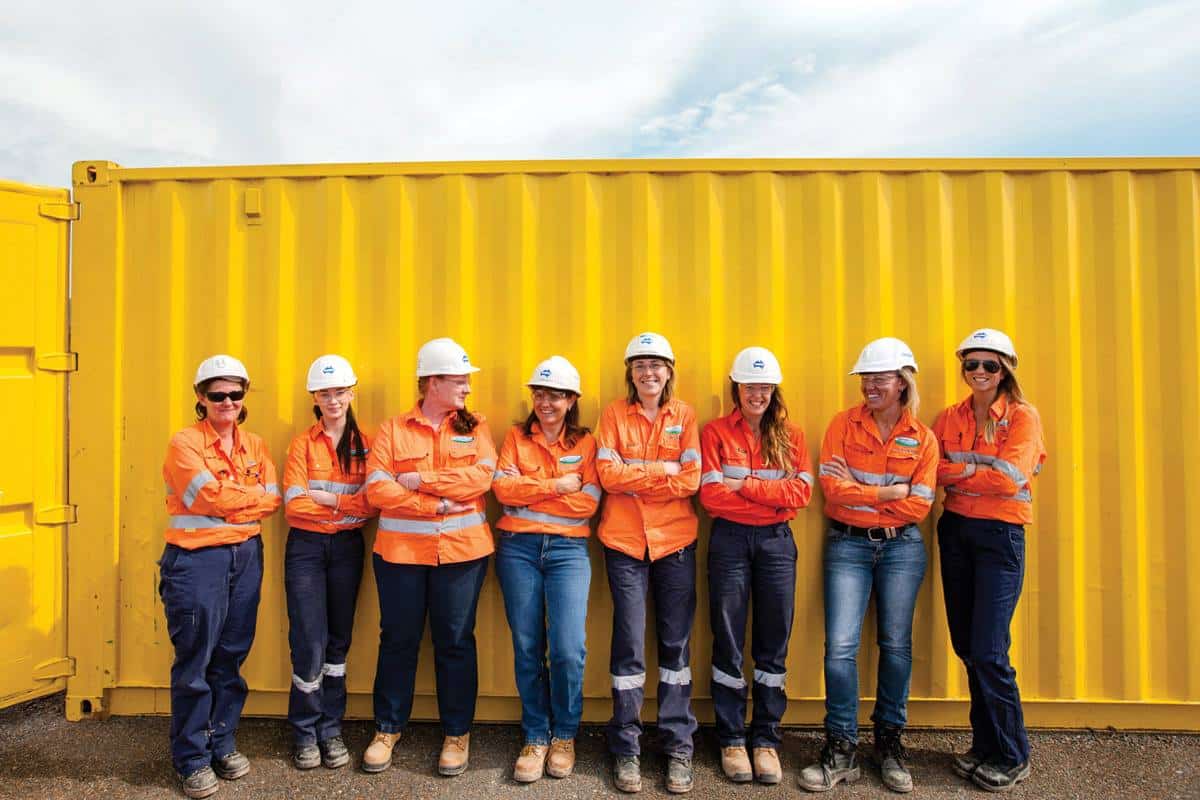
Mining companies and other large organisations have traditionally followed command and control or masculine-centric leadership model, as it has often been described, however, to survive in today’s market, this leadership model will have to adapt if companies would like to continue to stay competitive. The world is following a natural evolution of progressive ideologies that have been accepted over time. Ideologies that have changed over time include the indigenous population achieving their natural right of self-determination, women’s right to vote and equal pay. Even though society’s ideologies towards these issues have changed, in some circumstances policies haven’t been implemented as effectively as they could be, to assist in its practical assimilation into society. Today there are still many injustices that continue to fly under the radar of the public eye. Even though improvements have been recognised and made, there is still quite a way to go.
Currently, the mining industry internationally has a pressing issue with gender diversity.
Women continue to be, as described in a Forbes Magazine interview “vastly under-represented at all levels”. According to Bloomberg’s reports women makeup only 15.7% of the mining industry. In the last 5 years, the number of women in the industry has only grown by 1%. Women only comprise 4.5% of technicians, 11.1% of machinery operators and drivers, and only 13% of labourers. In management positions, the recorded number of women is only slightly higher, with them only making up 14.8% of the key management personnel and 16.3% of managers. At the highest tier of management, at a CEO position, women only make up 3%. Furthermore, the mining industry has the second-largest median gender pay gap across the world, although it must be said that here in Australia, the pay gap is approximately 7.4% compared to the national average of 27.2%.
However, there are a number of organisations such as International Women in Mining (WIMWA), which is one of the fastest-growing networks for women in the mining industry, with more than 10,000 members in over 100 countries, supporting over 50 “women in mining” groups around the world. Men and women utilise this source as a forum to talk about their lives, share experiences within the industry, and extend their professional networks. The WIMWA has grown rapidly over the recent years with over 3,000 in their mailing list, across the mining and resource sector, as well as an annual summit that attracts over 800 attendees and delegates. The networking events allow for an innovative mentoring program. Within this mentoring program, it allows for assistance in career management, defining professional goals and individual support from a successful representative from the resource and mining industry. There is a section on the site for job openings for indigenous women and culturally and linguistically diverse women: tradeswomen, apprentices, operators; as well as women engaged in the oil and gas sector. These initiatives are all aims at trying to boost women’s involvement in the industry.
Research has shown that a communal leadership style results in far better employee engagement scores in comparison to a traditional hierarchical environment. By enhancing motivation and moral, communal leadership can also improve work-life balance and job satisfaction. It is important that both men and women are involved in leadership positions, as both bring unique perspectives to the table. Research has shown that this type of leadership results in far more effective employee engagement in comparison to traditional hierarchical environments. As the mining industry is evolving, a paradigm shift is becoming noticeable towards a more woman-friendly industry. It is believed that the adoption of technology will serve as a perfect catalyst for gender diversity within the industry.
A number of large profile companies such as BHP and NSW Energy Coal have set ambitious goals to address gender inequality and diversify the workforce. Diverse and inclusive teams are known to be more creative, more innovative and shown for more profitable. They aim at improving the quantity of women in the mining workforce across all roles and management levels.
There are beliefs that there isn’t enough support in the industry for women, and awareness of this is key to diversify the workforce in the mining industry. The Chamber of Minerals and Energy aimed to increased gender diversity in the 2015 diversity report that suggested:
These initiatives were released as a result of the fall in numbers of women joining the industry between 2015 and 2016. However, since then, there has been little improvement.
However, further studies were conducted to directly address this issue, and these factors were identified as the most critical for a woman when it comes to job-seeking:
The most common clash is flexibility. Many women, especially between the ages of 25–40 are mothers. The responsibilities that this entails are deal-breaking when it comes to choosing an industry of work, hence, why flexibilities in working hours and rosters are an important factor when enrolling for a position. To diversify the workforce companies could invest more time and resources to supporting women in this fashion (listed) to make the job positions more favourable and realistic. In many industries today not only in Australia but across the world, gender inequality has been and in most cases still is an injustice in today’s society. However, by taking the necessary steps, such as providing women with adequate conditions, packages and working environment, are we able to slowly change these statistics to a more diversified workforce. Both men and women have unique perspectives on information, which is critical when it comes to decision-making and innovative perspectives. The only true way to the future is adjusting the current working conditions and expectations to suit the workforce.
References:
Are environmental regulations, health and safety concerns or potential profit loss a concern right now?
Contact Us Now